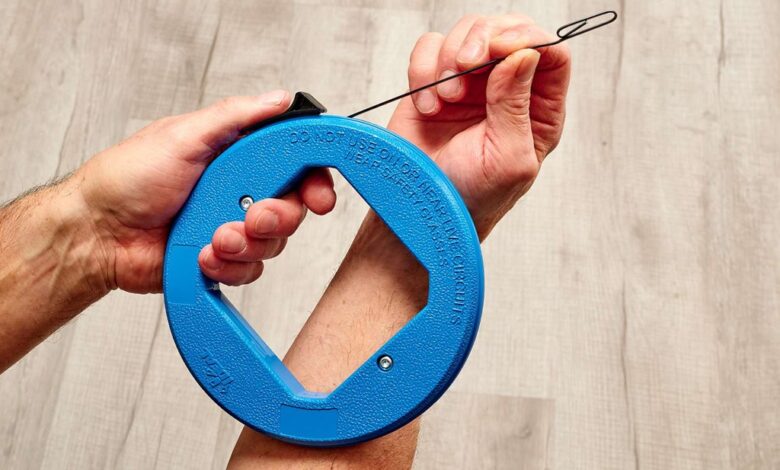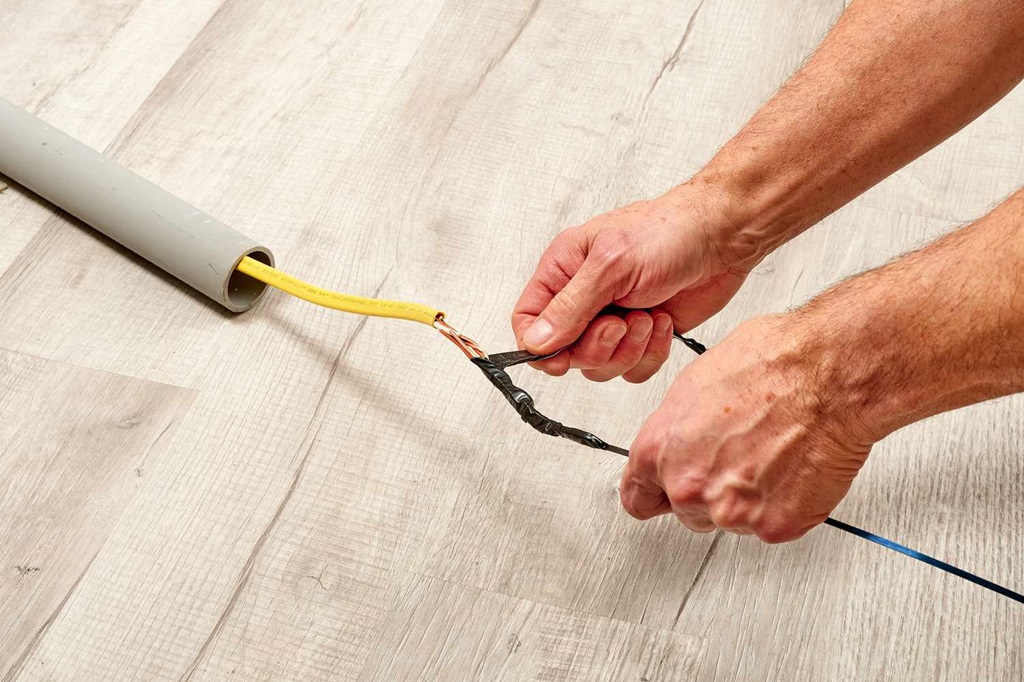Demystifying Fish Tape: A Comprehensive Guide for the Inquisitive

Fish tape, also known as a fish tape wire or wire puller, is a versatile tool used primarily by electricians, but also valuable for other professionals and DIY enthusiasts. This guide will delve into the mechanics of fish tape, its varied applications, and essential tips for effective usage. The content is provided by Best USA Tools.
What is Fish Tape?
Fish tape is essentially a long, narrow strip of material, typically made of steel or fiberglass, designed to be threaded through concealed spaces such as walls, conduits, or under floors. The tape is housed within a reel or a coil, allowing for convenient storage and controlled dispensing.
How Does Fish Tape Work?
- Threading: The leading end of the fish tape, often equipped with a hook or loop, is inserted into the desired opening, such as an electrical box or conduit.
- Pushing and Pulling: The tape is then pushed or pulled through the concealed space, navigating bends and obstacles along the way. Some fish tapes have a slight curve at the tip to facilitate this process.
- Attachment: Once the fish tape reaches its destination, the hook or loop is used to secure the wire or cable intended for installation.
- Retrieval: The fish tape, along with the attached wire or cable, is carefully pulled back through the space, guiding the installation to its intended location.
Types of Fish Tape
- Steel Fish Tape: This is the most common type, known for its stiffness and strength. It is ideal for pushing through obstructions and pulling heavy cables. However, steel fish tape can be susceptible to rust and may conduct electricity, requiring caution when working near live wires.
- Fiberglass Fish Tape: Lighter and more flexible than steel, fiberglass fish tape is easier to maneuver through tight spaces. It is also non-conductive, making it safer for electrical work. However, it is not as strong as steel and may not be suitable for pulling heavy loads.
- Nylon Fish Tape: This type is the most flexible, and ideal for navigating complex pathways with multiple bends. However, it is also the weakest and not recommended for pulling heavy cables.
Related: What is Heater Hose Made Of?
Applications of Fish Tape

- Electrical Wiring: Fish tape is indispensable for running electrical wires through walls, ceilings, and floors, especially when retrofitting existing structures.
- Networking Cables: It is also used for installing networking cables in homes and offices, providing a clean and concealed solution.
- Plumbing: Fish tape can be used to snake out blockages in plumbing pipes or to guide new pipes through walls.
- HVAC: In heating, ventilation, and air conditioning systems, fish tape can be used to run thermostat wires or pull ductwork through tight spaces.
Tips for Using Fish Tape
- Lubrication: Applying a lubricant, such as fish tape soap or silicone spray, can reduce friction and make it easier to push and pull the tape.
- Gentle Force: Avoid excessive force, as this could damage the fish tape or the surrounding structure.
- Bend Radius: Be mindful of the bend radius of the fish tape, as overbending can cause it to kink or break.
- Safety First: Always wear safety glasses and gloves when using fish tape, especially when working with steel tape near electrical wires.
- Teamwork: When working in tight spaces or with long runs, having a partner assist with feeding the tape or pulling the attached wire can significantly ease the task.
Their coordination ensures smooth progress, especially when navigating challenging pathways. Additionally, selecting the best fish tape for pulling wire can make a substantial difference in efficiency and ease of use. Discover more about the options available to optimize your workflow.
Fish Tape Alternatives
While fish tape is the most common tool for threading wires and cables, there are a few alternatives worth considering:
- Fish Sticks: These are shorter, more rigid versions of fish tape, designed for specific tasks like fishing wires through electrical boxes.
- Wire Pulling Lubricant: This can be used in conjunction with fish tape or fish sticks to reduce friction and make the process easier.
- Cable Snake: This is a flexible, spiral-shaped tool that can be used to guide wires through walls and other obstacles.
Conclusion
Fish tape is an incredibly versatile and valuable tool for a wide range of applications. By understanding how it works, its different types, and best practices for usage, you can harness its power to tackle various projects with confidence and efficiency.
This comprehensive guide aims to equip you with the knowledge and insights necessary to utilize fish tape effectively, whether you are a seasoned professional or a curious DIY enthusiast. Remember, safety should always be a priority when working with tools, especially in electrical applications. With careful planning and adherence to best practices, fish tape can be a game-changer for your projects.




